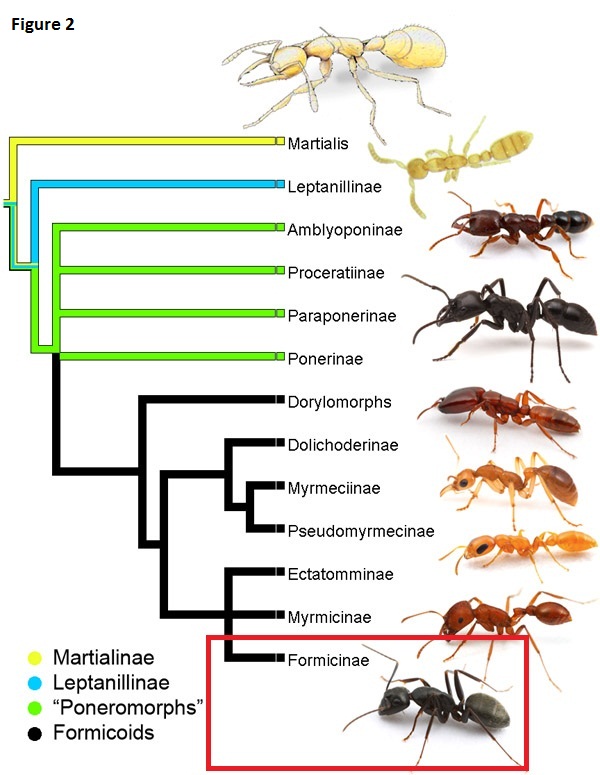Classification
Domain: Eukarya is the broad domain of organisms
that have membrane bound organelles, such as mitochondria, and a
true nucleus. This is in contrast to the other domains of Bacteria
and Archaea that do not possess membrane bound organelles or a
true nucleus (Campbell, Reece & et al, 2008).
Kingdom: Animalia includes organisms
that are multicellular and develop
tissues that form from embryonic layers. Another key characteristic
is that animals are heterotrophic by ingestion then digestion which
separates this kingdom from the kingdom of fungi because fungi
digest their food before ingesting (Campbell, Reece & et al, 2008).
Phylum:
Arthropoda have segmented bodies, jointed appendages, a
chitin exoskeleton, and an open circulatory system. The phylogenetic
tree below shows the relationship between the different phyla of animals and
the classes within the phyla of arthropoda are shown within the
boxed region (Campbell, Reece & et al, 2008).

Class: Insecta, or insects, are commonly known for
having three pairs of legs, three body parts (head, thorax, and
abdomen), and one pair of antennae. Typically organisms in
this group have two pairs of wings (but there are some organisms
with one pair or even none) and one pair of compound eyes (but some
have simple eyes). This group contains the majority of "bugs"
such as the
mosquito
and
horsefly (Campbell, Reece & et al, 2008).
Order: Hymenoptera are characterized by having a
mobile head, chewing or sucking mouthparts, and a process they undergo
known as complete metamorphosis. The antennae of organisms in this
group are longer than their head, as well as being highly social with
separate reproductive and worker castes (workers, soldiers, queen,
etc.).
Bumblebees,
ants,
hornets are examples of organisms that participate in this
construction (Cook, 2011).
Family: Formicinae are commonly known as ants (such
as the stereotypical ant described on the home
page, the
carpenter ant ).
They have a unique constricting band on the rear portion of their
waist or second abdominal segment that forms a well-defined node or
scale called a petiole. Their antennae are elbowed and their
bodies are usually brown, black, or reddish. The ant morphology
is depicted below on Figure 1 in more detail. Figure 2 illustrates the relationship between the various ant families within
hymenoptera, Formicinae is in the boxed area.

Genus: Tapinoma,
a genus within the above boxed family of Formicinae, includes ants with a
distinct bicolor pattern with a yellowish gaster, legs and antennae
that contrast their dark head and thorax. Also, Tapinoma
are distinguishable by their 4 segments on the top surface of
the gaster and by having an odor (Harris, 2005).
Species: Tapinoma melanocephalum is a
specific group of ants that "12-segmented antennae, lack of spines, lack of a stinger, lack
of large erect hairs
on the body, and the lack of a protruding node on the petiole" (MacGown
& Hill, 2009). Tapinoma can be
translated as lowly or humble and ordorus and melanocephalum means black head.
To learn more about the classification of this organism and many
others visit
http://bugguide.net
or to learn more about T. melanocephalum continue to the
habitat page.